한식 읽기 좋은 날
Interview with Ho-jun Jang, CEO of 'NEGI SILBI'
This Month’s HANSIK Talk
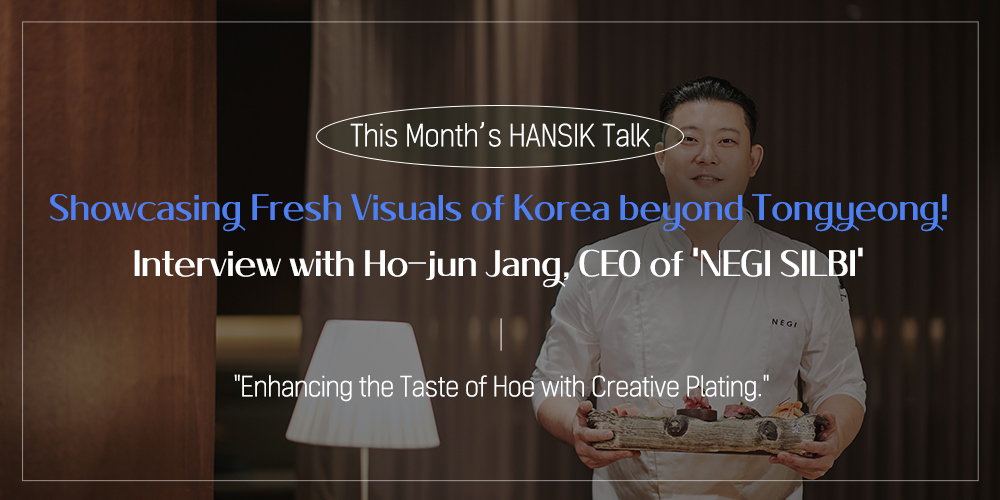
“Looks Delicious!” Anexclamation filled with excitement and anticipation bursts out when the visual senses react. That's why there's even a saying that ‘food is enjoyed by the eyes before the mouth.’ The importance of the visual presentation of food is significant. The dishes at 'NEGI SILBI' are no exception. Even before tasting, it is crafted to draw a 'Wow!' from you because Ho-jun Jang, the CEO of of NEGI SILBI, put most of his effort on the plating, as much as onthe freshness and taste of the ingredients.
Each and every piece of hoe at NEGI SILBI, overflowing with top reviews claiming satisfaction to both the eyes and the taste buds, encapsulates the history of CEO Jang, who was born and raised in Tongyeong. We met with Jang as he prepares for another new beginning and listened to the Korean culinary tale that he is crafting by the sea.

Tongyeong's Freshness Meets Exquisite Beauty at NEGI SILBI
NEGI SILBI, located in Gwanghwamun, Seoul is one of the ventures of NEGI COMPANYoperated by CEO Jang. While the company’s name 'Negi' means 'green onion' in Japanese, reflecting its foundation in Japanese cuisine, Jang emphasizes that NEGI SILBI is a Hansik restaurant. 'Silby' is the Korean word for 'Dajji,' a unique dining and drinking culture practiced in Tongyeong, where if you order a drink, the owner automatically prepares side dishes to accompany the drink. The name 'NEGI SILBI' embodies Jang's desire to offer the fresh seafood dishes available in Tongyeong to be experienced in Seoul.“
"I grew up in Tongyeong, and because my mother still resides there, we have access to fresh ingredients. I opened NEGI SILBI because I wanted to combine the fresh seasonal seafood dishes that I was familiar with from my hometown with the sophistication and sensibility of NEGI COMPANY,” said Jang.
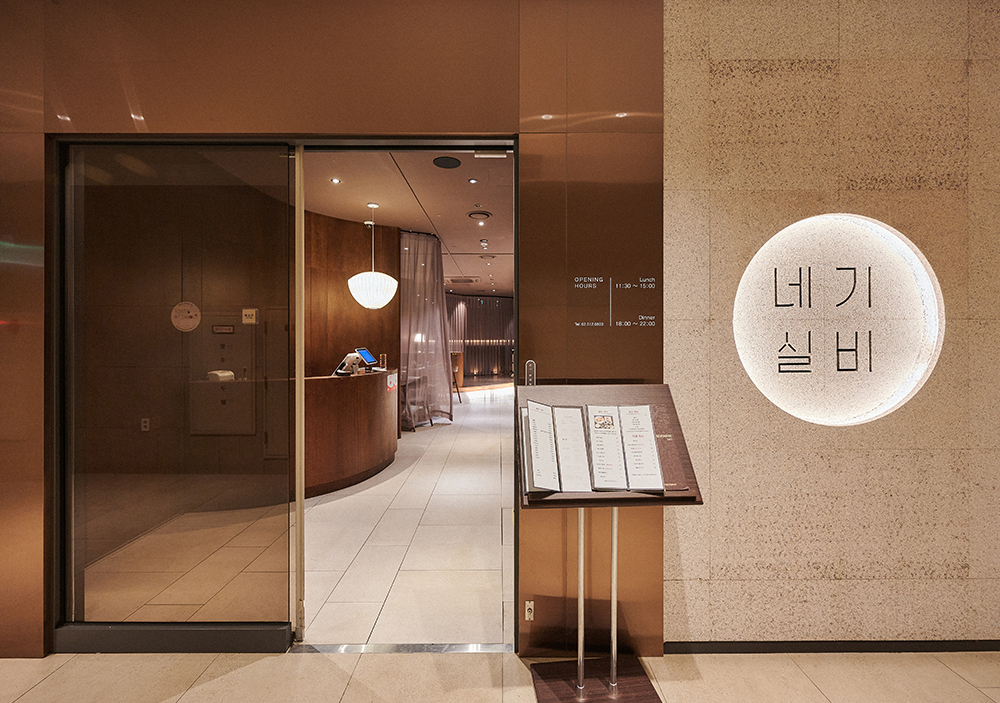
NEGI SILBI doesn't evoke the typical ambiance associated with a traditional Korean bar. It exudes sophistication and elegance. This ambiance resonates in the dishes served at NEGI SILBI, a result of Jang’s inclination toward visually appealing cuisine, as mentioned earlier.
"While I appreciate compliments about the taste of our food, reactions that emphasize the creativity in both taste and plating bring me greater gratification. It feels like truly being acknowledged for the area of my greatest attention.”
That said, the proper description of NEGI SILBI seems closer to ‘a place where beautifully crafted dishes are deliciously enjoyed in abundance.’
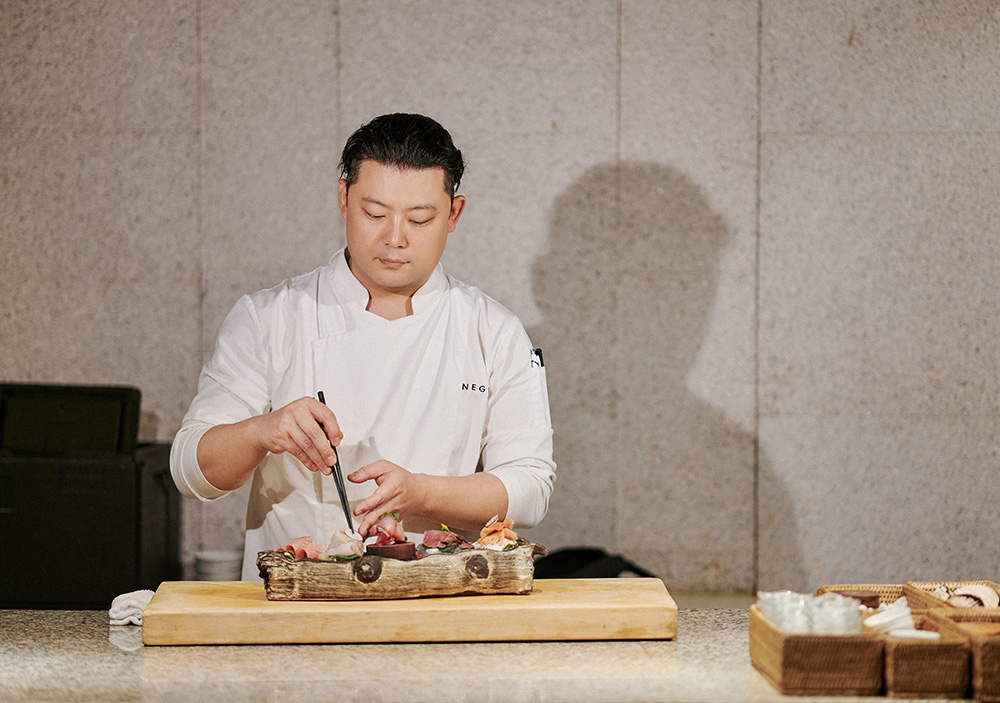

Our Hoe Pairs Quite Well with Rice!
So, how would Jang, a Tongyeong native who ate a lot and a wide variety of hoe in various ways while growing up, recommend the best way to enjoy hoe?
"For me, hoe has always been an easily accessible dish. We often had it at home, and I even used to catch and eat it with friends while fishing. I personally enjoy eating it with rice. I find that it tastes best when dipped in seasoned doenjang (soybean paste) in a leaf wraps. I still enjoy it that way quite often."
His recommended hoe and rice combination differs completely from sushi. While simply enjoying hoe alone is delightful, he says it tastes best when eaten together with perilla leaves, cabbage, and ssamjang ( red chili and soybean paste). Hence, he recommends ‘hoedeopbap (raw fish bibimbap).’
Commonly, those new to hoe usually eat it for the taste of chojang (sweet and sour red chili paste), while the more seasoned consumer would dip it in soy sauce to fully appreciate the flavor of raw fish. However, Jang’s recommendation – coming from someone who has eaten and made a lot of hoe, of eating it with rice seems like an easy and enjoyable way to eat hoe even for beginners.

NEGI SILBI presented a platter of hoe that included chamchi (tuna), gwangeo (flatfish), and in-season delicacies for winter such as bangeo (yellow tail), baby tuna, and bloodclams – all of which were caught in local seas. They were presented on an elegant wooden plate specially handpicked by Jang. The meticulous arrangement of each hoe could be felt and in particular, the yellow tail belly placed in the center grabbed our attention. This made us curious: Why should yellow tail be enjoyed in winter season?


Going Beyond Tasting Tongyeong in Seoul to Tasting Korea all Around the World!
Jang is currently planning to expand his business internationally. He isn't merely dreaming; instead, he is actively devising specificbusiness plans and meeting people in Southeast Asian regions like Indonesia and the Philippines. Utilizing the knowledge and experience gained from his business endeavors thus far, his goal is to localize Hansik by adapting it to different locales.
"Although each venture under NEGI COMPANY will operate with its own distinctive menu, personally, I have a greater interest in Hansik than Japanese cuisine. That’s why I’m currently in meetings to open a Korean restaurant tailored to suit international settings. The plan is still in its initial stage, but I aspire to promote sophisticated and stylish Hansik.”
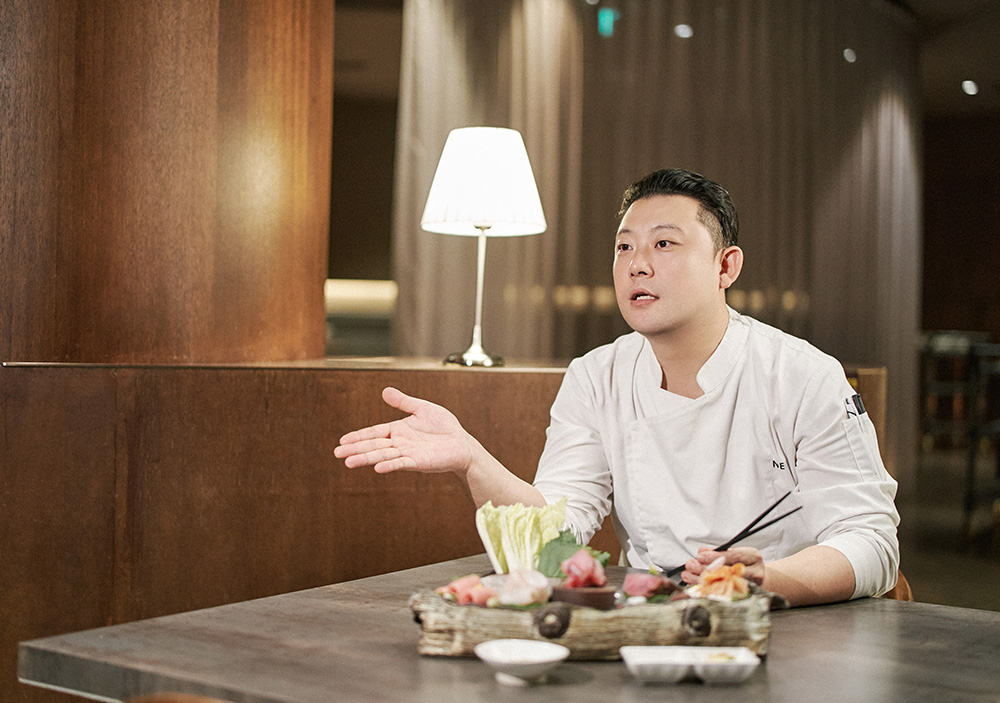
NEGI SILBI recently revamped its plating concept, making changes to allow guests to enjoy a greater variety of hoe in one sitting. Jang consistently studies and researches concepts, marketing, and strategies, taking into account the unique characteristics of the business district and consumer preferences. Then, he implements necessary changes with drive and determination. However, what remains unchanged and steadfast is his dedication to the customers who visit NEGI SILBI.

Beyond savoring the fresh flavors of Tongyeong in Seoul, as we follow Jang’s expanding mindset and passion to broaden the horizons further, we anticipate to soon experience the sophisticated Hansik of NEGI SILBI abroad.
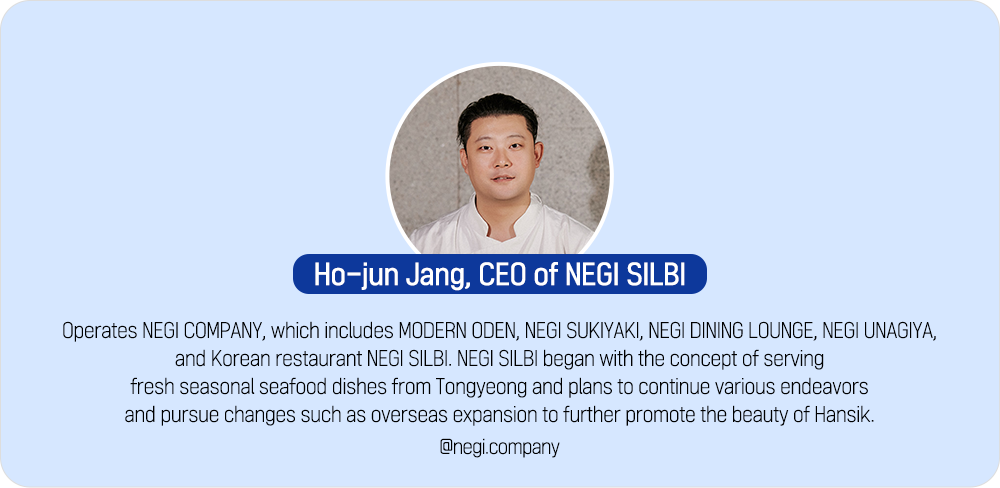

 한국어
한국어
 English
English






